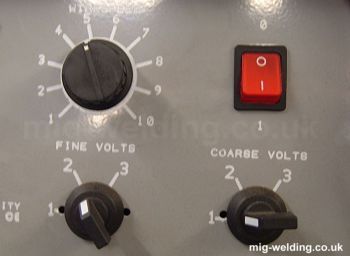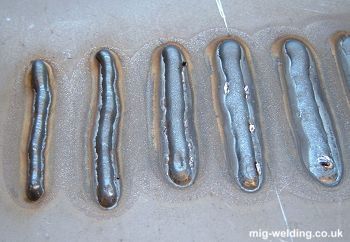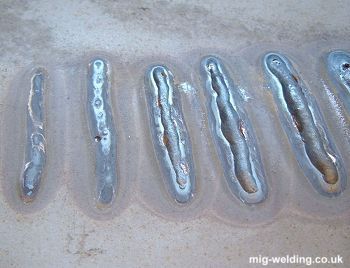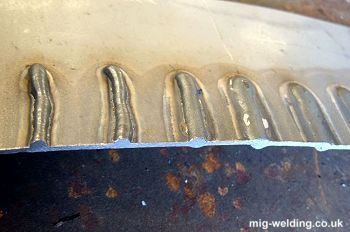Adjusting Power Settings
The page covers the effects of setting a machine to suit a metal thickness. Note other factors also come into play:
- The speed of welding will affect the weld appearance and penetration. Decreasing the speed of torch travel will increase penetration.
- The weave pattern of the torch also influences weld penetration.
- Preparing the joint in to a "V" shape or leaving a root gap can dramatically reduce the power required for a given metal thickness. These techniques are touched upon in the 90amp 4mm challenge.
Power controls, amps and voltage
The power controls on a MIG welder adjust the voltage rather than the amps, though to some extent that's academic as increasing the voltage will also increase the amps.
It's worth knowing that the wire speed also controls the amps.
Comparing the different settings
The calculator provides a rough starting point for power settings. The easiest way to fine tune the setting is to practice on scrap steel of the same thickness as the steel you want to weld.
Here a series of welds have been laid on 1.2mm sheet using increasing power settings from left to right. Welds made on the lower settings are quite narrow and tall, and welds on the higher settings are wide and flat.
Weld penetration
Looking at the reverse side of the weld is more informative. The two welds on the left side haven't penetrated all the way through the sheet, but the three welds on the right have penetrated a little too far.
The aim when welding two pieces together edge-to-edge is to end up with the edges of the metal melted into the weld on both sides of the joint, but not to have excessive penetration.
Sectioned welds
The sectioned sheet shows the effect of the increasing power settings more clearly. In the first two welds the weld builds up above the sheet, but doesn't penetrate through.
The third weld has build up on the top and bottom of the sheet. It is the best weld in the photo.
The welds to the right have more penetration below the sheet than above which shows the power setting is too high.







